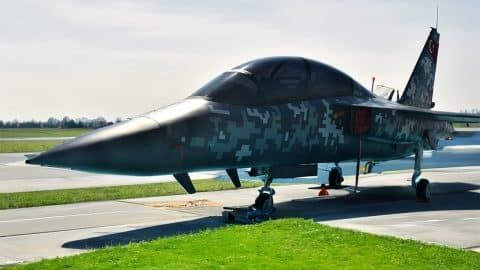
YouTube / Dark Tech
The Turkish Air Force had long wanted to replace the aging aircraft in their arsenal. Considering that, the Turkish Defense Ministry teamed up with Turkish Aerospace Industries in 2017 to develop the nation’s first jet aircraft they dubbed “The Hurjet.”

The new jet is expected to replace the T-38 Talon in the trainer role while also replacing the F-16 Fighting Falcon for close air support missions. In addition, the Hurjet is also planned to supersede the Turkish Stars aerobatic team’s F-5 fighters.
A mockup of the design was first unveiled at the 2018 Farnborough International Airshow. The Hurjet was to become a single-engine, tandem-seat aircraft fitted with modern avionics and advanced features that could enhance the awareness and combat capabilities of the Turkish pilots.

And even though no information is currently known about the Hurjet’s armament, it is expected to carry over 6,610 lbs of ordnance on its three underwing hardpoints on each wing.
Moreover, the Hurjet is estimated to be over 44 ft long and 36 ft wide, capable of aerial refueling, automated flight, and full integration with the latest heads-up display technology.
The company has already stated that the new jet would be able to reach Mach 1.4, with a rate of climb of 35,000 ft, a service ceiling of 50,000 ft, and a range of 1,620 miles.
The Hurjet’s first ground tests were carried out on December 26, 2022, while its first engine start was done a month later on the 30th. Taxi tests began on March 18, 2023, culminating in the Hurjet’s maiden flight on April 25.
During the flight, the Hurjet was able to stay in the air for 26 minutes and reach an altitude of 14,000 ft and a speed of 250 knots.

With its maiden flight a complete success, we’ll have to see what the Hurjet variants can do.
So far, the variants include an Advanced Jet Trainer, Lead-in Fighter Trainer, Light Attack/Close Air Support, Air Policing, and the Acro Team Aircraft.